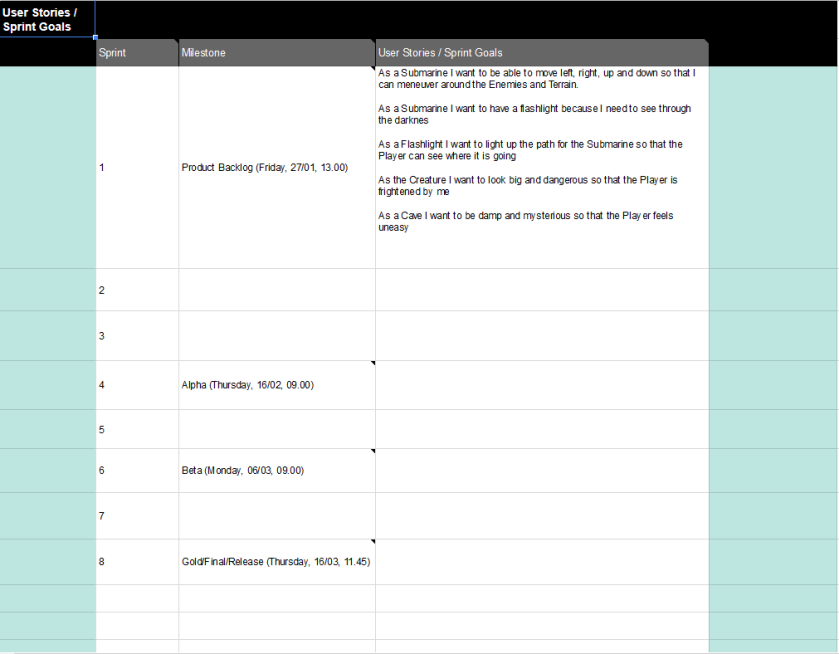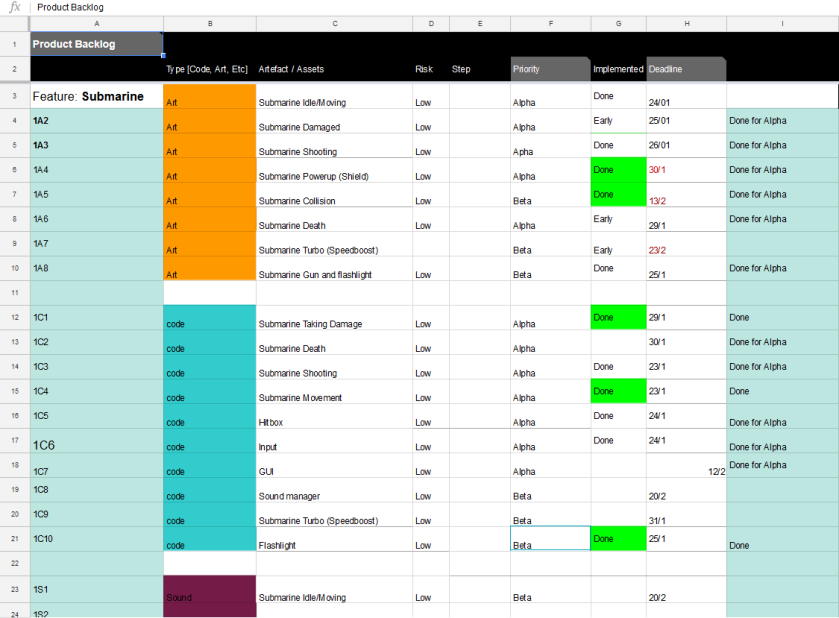This week, my work has been dedicated towards creating a tutorial level for our game. It’s not part of our original level, but an optional level that the player can run if it’s the first time playing the game. All the instructions to controls, enemy behaviour, powerups and objectives isn’t necessarily restricted to only the tutorial, but it can help the player get a feeling for the actual gameplay.

The reason for me to choose this as my priority number one for the week, was that during the last play-test session (Beta), we recieved alot of comments saying that the controls were “hard”, or “clunky”, but “fun when mastered”. This indicated that the players did enjoy the movement of the playable avatar, but it took some time getting used to it. How do we keep the controls as they are, but give players an option to learn them in a safe enviroment? Well a tutorial of course! The tutorial is not a part of the original level, rather a different, optional level for the player to try out if they want to get a hold of the basic gameplay before being put into the immediate action that the “real” level provides.
There had also been thoughts on creating a “intro” for our game, as you start off by being chased by this big nasy underwater creature. Just as it is, it may seem like the game has a very unfriendly and hectic start, but if we would implement the “intro” into the tutorial level, we would smash 2 birds with one stone.


I created a separeted level part from the game we have created thus far, and removed The Creature, which is the big thing chasing you throughout the main game to ease off the preassure, giving the player time to familiarize themselves with the game. In the tutorial level I implemented simple obstacles that will be encountered in the main level, in order to prepare the player for how they should tackle the challenges. 
The basic enemies and powerups are also implemented, as I wanted the player to encounter everything there is, to learn all there is to learn, but in their own time. The player can still take damage and die in the tutorial, simply because it wouldn’t be fair to make them “invincible”, even if it was for learning purposes. The player would only get used to not taking damage and not see the real danger with colliding with terrain/enemies etc.

Upcoming work will be to finalize the tutorial and to create the “introduction” sections, where the player will get a glimpse of “The Creature”, which will be the main challenge to deal with in the main level.
Thanks for reading, have a good one!
/Hampus Serrestam


 hased, which was conveyed to a certain degree, acceptable at least. We got a very important critique regarding the gameplay and the aesthetic feeling we wished to achieve, that mentioned the recurring problems with the player dying over and over again, from everything but the Creature (The main enemy that chased the player).
hased, which was conveyed to a certain degree, acceptable at least. We got a very important critique regarding the gameplay and the aesthetic feeling we wished to achieve, that mentioned the recurring problems with the player dying over and over again, from everything but the Creature (The main enemy that chased the player).









